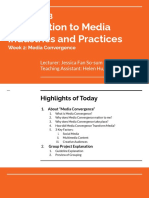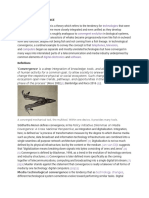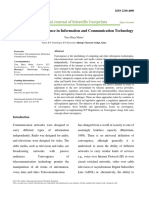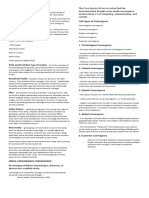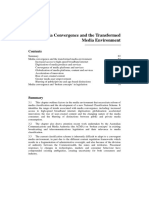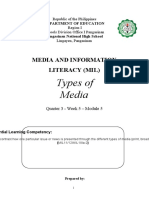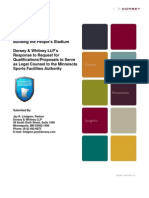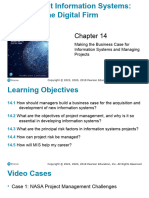100% found this document useful (1 vote)
102 views12 pagesMACJ - 101 Unit I
This document provides an overview of the concept of convergence in media. It defines media convergence as the merging of mass communication outlets like print, television, radio and the internet through digital platforms. It also defines technological convergence as different systems evolving to perform similar tasks. The document then discusses several models of convergence including Negroponte's three intersecting circles model and Flynn's three areas of convergence related to devices, networks and content. It provides implications of convergence such as increased efficiency and information for consumers, as well as concerns about media consolidation and control over information.
Uploaded by
Mina Jayne SinoyaCopyright
© © All Rights Reserved
We take content rights seriously. If you suspect this is your content, claim it here.
Available Formats
Download as PDF, TXT or read online on Scribd
100% found this document useful (1 vote)
102 views12 pagesMACJ - 101 Unit I
This document provides an overview of the concept of convergence in media. It defines media convergence as the merging of mass communication outlets like print, television, radio and the internet through digital platforms. It also defines technological convergence as different systems evolving to perform similar tasks. The document then discusses several models of convergence including Negroponte's three intersecting circles model and Flynn's three areas of convergence related to devices, networks and content. It provides implications of convergence such as increased efficiency and information for consumers, as well as concerns about media consolidation and control over information.
Uploaded by
Mina Jayne SinoyaCopyright
© © All Rights Reserved
We take content rights seriously. If you suspect this is your content, claim it here.
Available Formats
Download as PDF, TXT or read online on Scribd
/ 12

























